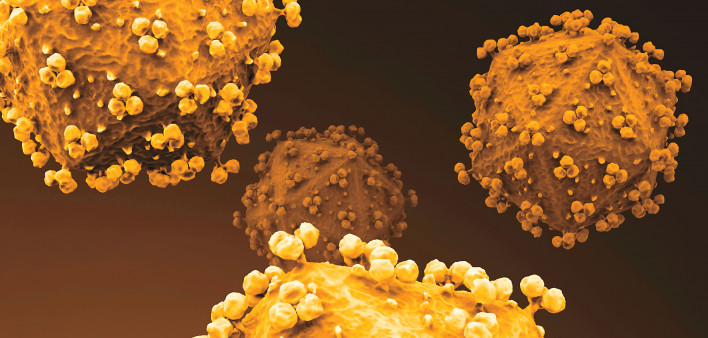Over time, HIV may increasingly hide its genetic material in inactive parts of the human chromosome where it is unable to produce new virus, according to research published in Cell. These findings could offer clues to a “block and lock” strategy to help people on antiretroviral treatment achieve long-term remission.
While antiretrovirals can keep HIV replication suppressed as long as treatment continues, the virus inserts its genetic blueprints into the DNA of human cells and establishes a latent reservoir that is unreachable by antiretrovirals and usually invisible to the immune system. While these so-called HIV proviruses appear to lie dormant in resting immune cells while on treatment, they can start churning out new virus if antiretrovirals are discontinued.
Over the years, researchers have identified a small number of people who manage to naturally control HIV without treatment and experience no obvious disease progression. Some (known as elite controllers) have never taken antiretrovirals while others (known as posttreatment controllers) are able to maintain viral control after stopping therapy.
In 2020, Xu Yu, MD, of Massachusetts General Hospital, and colleagues reported that some 60 elite controllers had HIV blueprints locked up in parts of their chromosomes—dubbed “gene deserts”—where they can’t be used to make new virus. One woman, Loreen Willenberg (the San Francisco Patient), appears to have eliminated HIV despite never taking antiretrovirals. Last November, Yu’s team reported that an Argentine woman, known as the Esperanza Patient, may be the second woman to achieve a natural cure without treatment.
The new study suggests that some people who have been on antiretrovirals for a long time may also sequester HIV proviruses in gene deserts, which could enable them to achieve long-term remission after stopping treatment, sometimes called a functional cure.
Cure researchers have tried many “shock and kill” or “poke and clear” strategies that aim to activate the viral reservoir, making the latently infected cells visible to the immune system while using antiretrovirals to mop up newly produced virus. But the latest findings suggest that a “block and lock” strategy that keeps latent virus in a deep sleep may be a more fruitful approach.
Yu, Mathias Lichterfeld, MD, of Brigham and Women’s Hospital, and colleagues analyzed 1,270 proviruses in immune cells from six people who had been on antiretroviral therapy for nine years or more, mapping the location of transcriptionally active and silent proviruses. Only 147 proviruses encoded intact HIV genomes capable of replication. In three people, this latent HIV appeared to gradually concentrate in gene deserts and regions with inactive genes that encode zinc finger proteins, similar to what happens in elite controllers.
Surprisingly, the researchers found evidence that the viral reservoir is not entirely quiescent, but rather some cells continue to produce a small amount of virus. These transcriptionally active proviruses may “play a critical role for driving viral rebound in case of treatment interruptions,” they suggested.
The study authors speculated that, over time, cells with active proviruses are eliminated by the immune system, so the proviruses that remain are increasingly segregated in inactive sections of the cells’ DNA. Immunotherapy and latency-reversing agents used to “shock and kill” may accelerate selection of silent proviruses, resulting in a reservoir with deeper latency that “may allow for a peaceful coexistence between HIV-1 and the host and enable drug-free control of HIV-1 infection,” they wrote.
While elite controllers may have unique immune responses that facilitate this process, it may also occur in some typical people with HIV on long-term treatment whose proviruses have been sequestered in gene deserts, enabling them to stop antiretrovirals without setting off a new round of viral replication.
The researchers plan to test this hypothesis in a study participant who has been on antiretroviral therapy for more than 20 years and has agreed to try a treatment interruption. In addition, they are starting another study to look for more people on long-term treatment who have the same viral integration pattern.
Click here to read the study.
Click here for more news about HIV cure research.







Comments
Comments